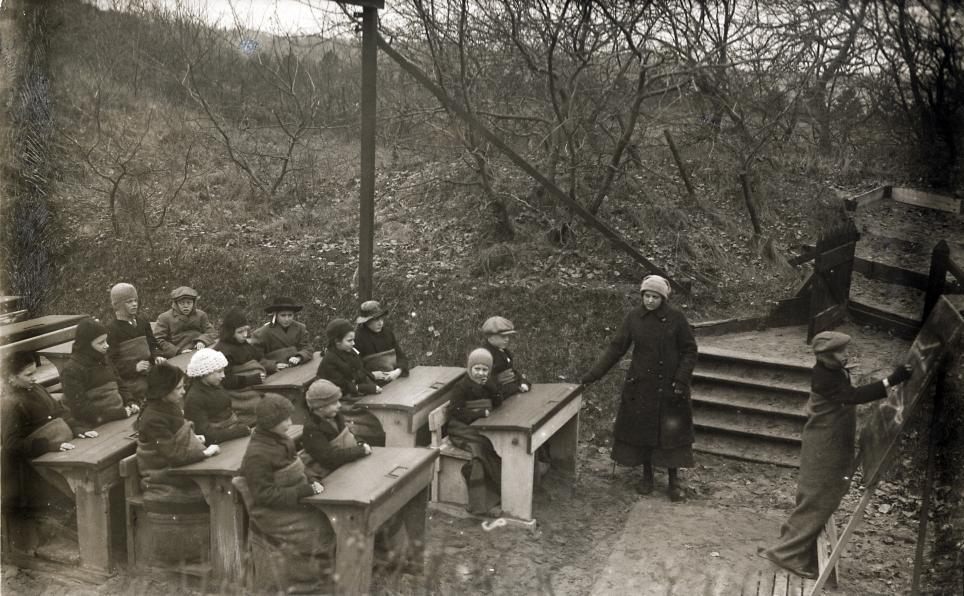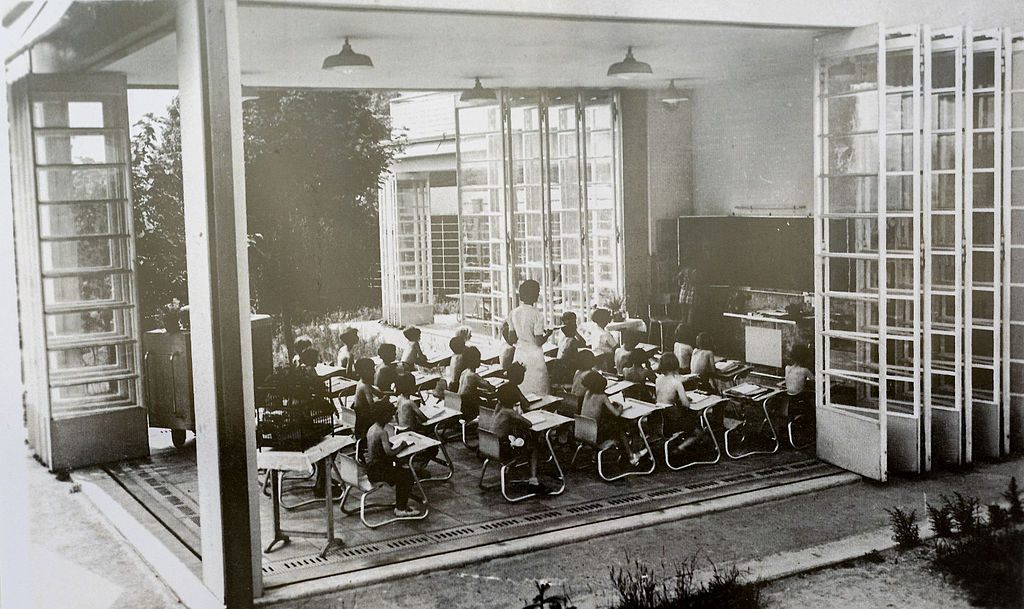The Early 1900s Movement to Build Schools Without Walls
Take that, tuberculosis!
In 1904, German doctor Bernhard Bendix teamed up with educator Hermann Neufert to do something radical: create a school with few to no walls. Their idea spawned what came to be known as the open air education movement, which spread through the United States and most of Europe before the outbreak of World War I. Their aim was simple: combat the rising tide of tuberculosis.
At the time, many professionals believed that the cramped quarters and lack of access to fresh air in many schools exacerbated the risk of disease. To keep kids healthy, they needed to modify the current system: keep class the same, but emphasize ventilation—and, in many cases, relocate schools to the forest.
The result? Countless classrooms with neatly arranged desks and chalkboards that sat in the middle of the woods.

Many of these schools were made from tents or prefabricated buildings. Some, as in the video above, emphasized exercise. They paired outdoor games with frequent health check-ups to create an education experience designed around disease prevention.
The movement became so popular that it inspired five international conferences from 1922 to 1956. By the late 1950s, however, it fizzled out, largely because of improved public health and sanitation practices.
But open-air education was no great delight. These schools clung to their promises of fresh air and ventilation even during the winter months. One man described to The Independent his experiences in Aspen House, a school with a roof, desks, and a chalkboard—but no walls.

“At the height of summer the sunlight poured in; on a rainy autumn day the child on the end of a row could reach out and get his or her hand wet,” he said. But in the winter, it was freezing. “Sometimes, when we got there in the morning… the snow would have blown in on to the tables and chairs and we would have to clear it off before we could start.”
Other schools instituted what were known as “sitting-out bags,” thick blankets that kids wore to keep warm during the winter.
Class outside? Not all fun and games.










Follow us on Twitter to get the latest on the world's hidden wonders.
Like us on Facebook to get the latest on the world's hidden wonders.
Follow us on Twitter Like us on Facebook